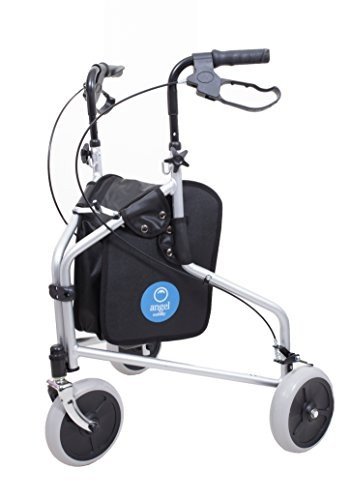Mobility Scooters: A Comprehensive Guide
Mobility scooters have become an important mode of transportation for numerous people facing mobility obstacles. This article explores the different elements of mobility scooters, including their types, advantages, functions, and a guide for potential purchasers.
Understanding Mobility Scooters
Mobility scooters are electrically powered devices created for people with minimal mobility. They offer a method of transportation for individuals who might have difficulty walking but still wish to maintain their independence. They are available in various styles and functions to cater to a wide variety of requirements.
Types of Mobility Scooters
Mobility scooters can typically be classified into 3 primary types:
| Type | Description | Best For |
|---|---|---|
| Compact Scooters | These are small and lightweight, ideal for inside your home and short trips. | Users with minimal storage area or those who travel frequently. |
| Mid-size Scooters | A balance between portability and stability, suitable for both indoor and outdoor use. | Those who need to cover a variety of surfaces. |
| Heavy-duty Scooters | Big and robust, designed for rugged outdoor usage and heavier people. | Users requiring additional weight capability or going off-road. |
Key Features of Mobility Scooters
The option of mobility scooter often depends on the features that line up with individual requirements. Here are some of the key features to think about:
- Weight Capacity: Mobility scooters come with different weight limits. It is important to choose a scooter that can properly support the user's weight.
- Variety: The range a scooter can travel on a single charge differs. Depending on user requirements, one might go with scooters with a series of up to 40 miles.
- Speed: Most mobility scooters can reach speeds in between 4 to 8 miles per hour. Consider what speed is comfortable and safe for the desired environment.
- Turning Radius: A compact turning radius is important for indoor use, permitting much easier navigation in tight spaces.
- Battery Type: The kind of batteries utilized can affect the scooter's performance. Lead-acid and lithium-ion batteries are the most typical.
Benefits of Using Mobility Scooters
The advantages of mobility scooters extend beyond just transport. Some key advantages include:
- Independence: Users can navigate their environment without counting on caregivers, promoting self-reliance and self-esteem.
- Health Benefits: Using a scooter can encourage outdoor activity, resulting in physical and psychological health improvements by reducing sensations of isolation.
- Convenience: Scooters can quickly be operated in numerous environments, whether inside your home, in mall, or outdoors.
Crucial Considerations When Buying a Mobility Scooter
When acquiring a mobility scooter, a number of considerations can assist guarantee that you choose the right design:
Assess Individual Needs:
- Mobility level: Consider just how much assistance the individual will require.
- Variety of use: Determine where the scooter will mostly be used (inside, outdoors, on rough terrains, and so on).
Test Drive:
- Always test drive numerous designs to discover an appropriate fit. Take note of comfort, ease of steering, and the scooter's responsiveness.
Evaluation Safety Features:
- Look for scooters with adequate safety features like lights, indications, and anti-tip styles.
Inspect Warranty and Service Options:
- A dependable guarantee and offered service options are crucial for long-lasting use.
FAQs about Mobility Scooters
1. How quick do mobility scooters go?Mobility scooters generally have speeds varying from 4 to 8 mph, with the majority of designed for security rather than high-speed travel. 2. Are there disabled scooters for sale on mobility scooters?Yes, mobility
scooters feature particular weight limits, often varying from
250 pounds to over 500 pounds, depending on the design. 3. Can mobility scooters be used indoors?Certain models, especially compact scooters, are particularly designed for
indoor usage and are much easier to steer in tight spaces. 4. How often do the batteries need to be replaced?Battery life can vary based upon usage, but generally, with proper care, batteries might last between 1 to 3 years before requiring replacement
. 5. Are mobility scooters covered by insurance?Coverage can differ, however some insurance strategies, including Medicare and Medicaid, might cover part of the cost. It's recommended to inspect with private insurance coverage companies. Mobility scooters function as a
important tool for lots of people, allowing them to preserve
their flexibility and independence. By understanding the different types and functions of mobility scooters, people can make educated choices tailored to their specific requirements.
Whether used for errands, interacting socially, or leisurely activities, mobility scooters can enhance the quality of life for those with mobility restrictions. Investing in a mobility scooter is a choice that can significantly affect an individual's life. For that reason, individuals need to carefully assess their choices and select a design that best lines up with their lifestyle and mobility requirements
.

